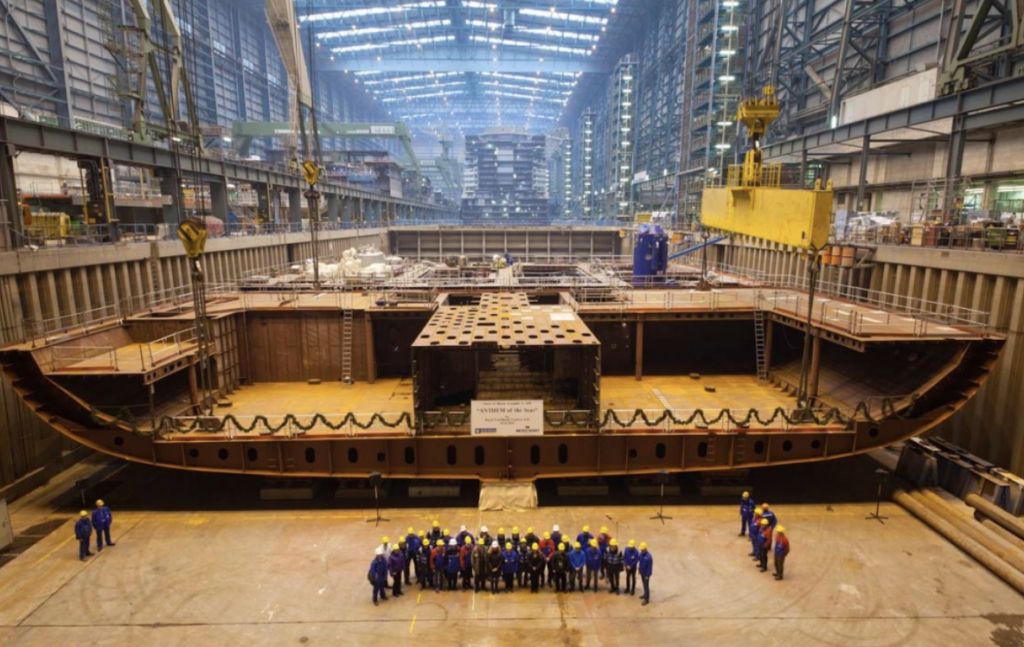A Look into New Ship Building Methods
 We have often found ourselves pondering the question “what goes into building a cruise ship?” So, we decided to find out for ourselves about ship building and how the world’s major cruise liners are designed and built.
We have often found ourselves pondering the question “what goes into building a cruise ship?” So, we decided to find out for ourselves about ship building and how the world’s major cruise liners are designed and built.
Building cruise ships is a massive undertaking. Years of planning and design are carried out even before construction begins, and the movement from factory to dry-dock and launch is another rigorous step. It takes approximately 2 years from start to finish, but it can take longer or less depending on the size of the ship.
Designing A Cruise Ship
The cruise lines hire a design firm to come up with the latest concepts ranging from restaurants to staterooms and innovative public spaces. The vessel’s interior design must match the demographics and embrace the company’s market segment.
The design firms are involved in every facet of the design process, including typography on signage, elevator buttons, carpets and furniture – most of which is custom designed and produced for a specific ship. Cabins and public areas are designed with a standard service life of 30 years; interiors must stand the test of time and changing trends. Staterooms must be highly functional being as light as possible to help save fuel.
Each cruise line looks to find their own unique spot in the market, driven not only by price and product, but by style and functionality to create the experiences offered onboard. Cruise lines are pushing the envelope by the day, and it all starts with a blank piece of paper under the eye of a designer.
Building A Cruise Ship
We know cruise ships are built in shipyards. But what exactly is a shipyard?
At the shipyard, you’ll find large cranes to position each part of the ship into place, machinery to prepare and secure the hull, dry docks, painting facilities, equipment to weld portions of the ship together and slipways that allow for completed portions to be floated in the water. The largest shipyards in the world include Fincantieri in Italy, Meyer Werft in Germany and STX Europe with locations in Finland and France.
The ships are not built entirely on site, certain pieces are built off-site and brought to the shipyard to be added to the growing vessel. For example, while the shipyard constructs the hull, the passenger cabins are prefabricated in the workshop before being fitted on the ship like giant Lego pieces. In fact, much of the ship, including steel hull plates are constructed in a modular approach. Modular methods are used out of necessity as well as convenience.
The hull first takes shape on land before the rest of the ship’s pieces and parts are placed on top. To validate the hull’s structure, dams unleash torrents of water in a controlled factory-test environment before the entire ship is eventually pushed into a real body of water.
Fun Fact…. Cruise ships are built upside down in separate sections. Why? Because it’s easier for builders to weld each plate of steel in a downward direction, rather than upwards with their backs facing the ground.
Access Cruise is a Miami based cruise marketing and sales consulting group, specializing in product and business development within the cruise industry.